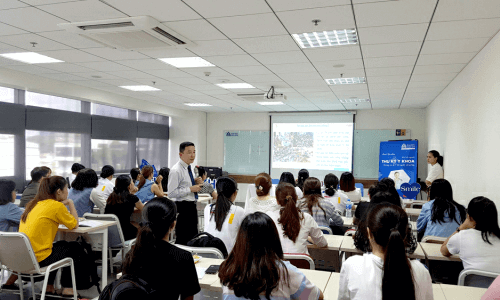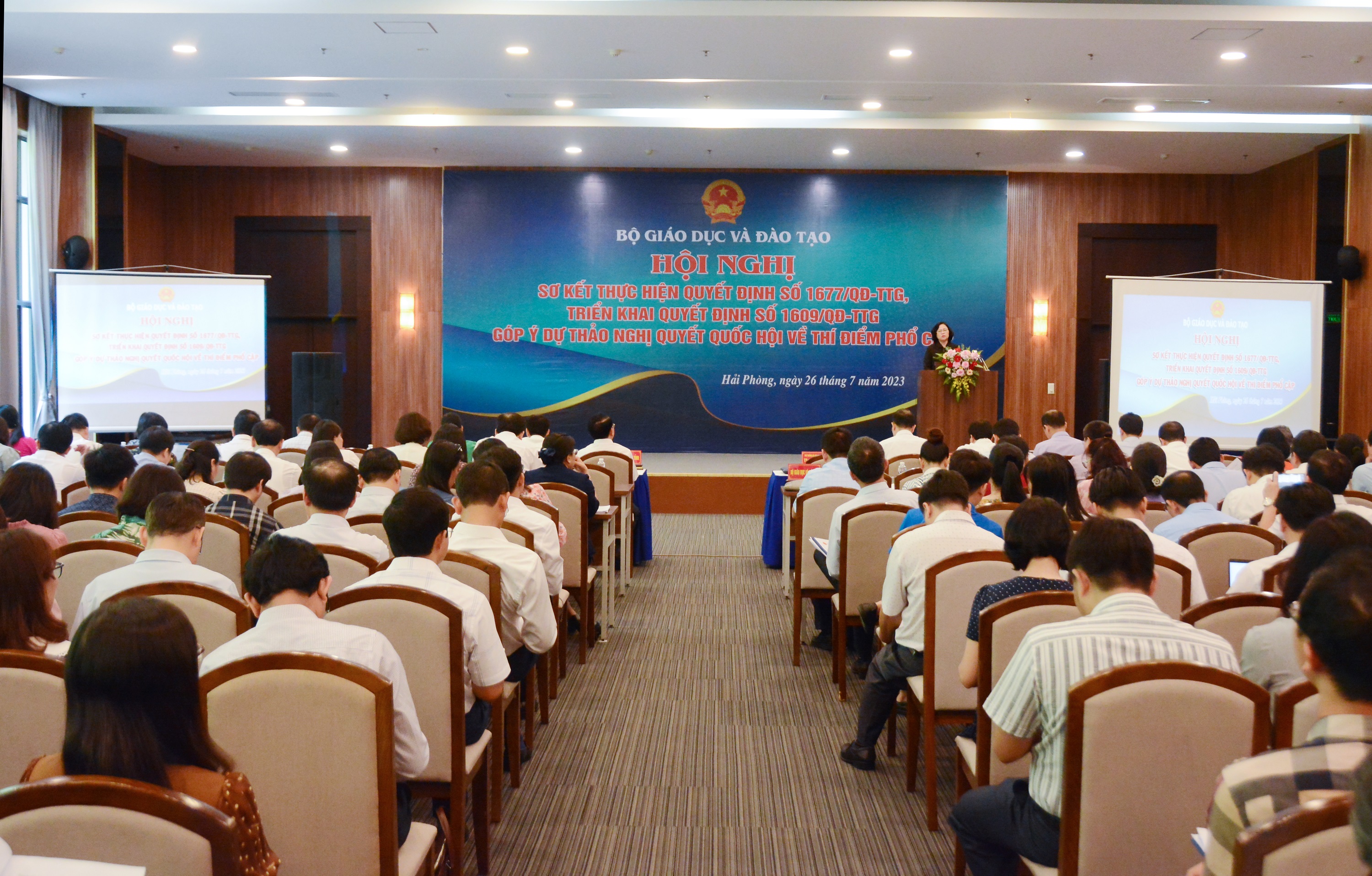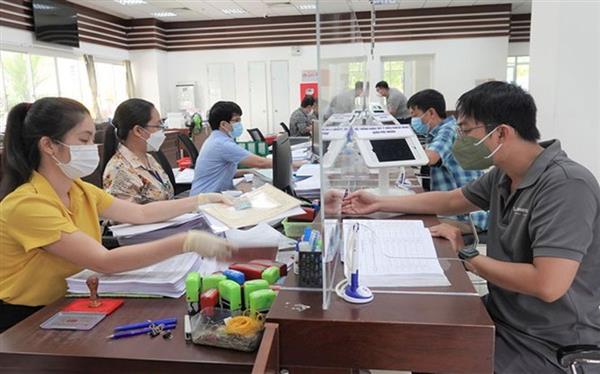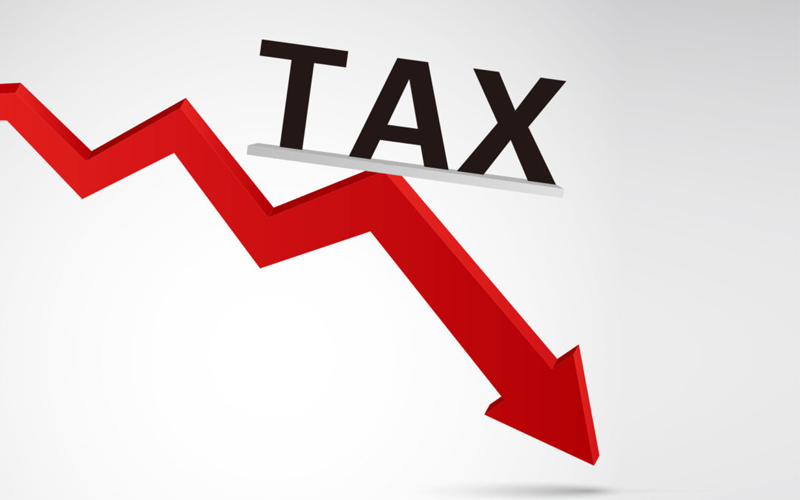Proposal on 8 standards for assessing the quality of higher education programs in Vietnam
The Department of Quality Management proposes the standards for assessing the quality of higher education programs in Vietnam

Proposal on 8 standards for assessing the quality of higher education programs in Vietnam (Image from the Internet)
Proposal on 8 standards for assessing the quality of higher education programs in Vietnam
According to the Draft Circular Regulations on quality accreditation of educational programs at higher education levels, evaluating the quality of an educational program involves collecting, processing information, and providing assessments on the internal quality assurance system. This is built based on standards, guidelines, and controlled across all content, components, and activities related to the education program of the training institution. This includes: objectives and learning outcomes of the program; structure and content of the program; teaching and learning activities; assessment of learning outcomes; the faculty and researchers (if any); student support services; infrastructure and equipment; outcomes and outputs.
The Draft Circular proposes the set of standards for evaluating the quality of higher education programs, including the following 8 standards:
Standard 1: Objectives and Learning Outcomes of the Educational Program
- Criterion 1.1: The objectives of the educational program are clearly defined, appropriate, and connected with the mission, vision, and development strategy of the training institution; they comply with the objectives of higher education as stipulated in the Higher Education Law.
- Criterion 1.2: The learning outcomes of the educational program are clearly constructed; they align with the mission, vision, and strategic goals of the training institution and are communicated to relevant stakeholders.
- Criterion 1.3: The learning outcomes of the educational program align with the Vietnamese National Qualifications Framework, including both general and specific learning outcomes.
- Criterion 1.4: The learning outcomes of all modules are constructed appropriately and are consistent with the learning outcomes of the educational program.
- Criterion 1.5: The learning outcomes of the educational program clearly reflect the requirements of the stakeholders, especially external stakeholders.
- Criterion 1.6: The learning outcomes of the educational program are measured and evaluated at the time of graduation.
Standard 2: Structure and Content of the Educational Program
- Criterion 2.1: The description of the educational program and the course syllabi provide sufficient information, are updated, approved, and publicly disclosed for stakeholders to easily access.
- Criterion 2.2: The structure and content of the educational program are designed and developed in a manner that ensures students achieve the learning outcomes and have a workload consistent with the regulations.
- Criterion 2.3: The structure and content of the educational program are designed and developed based on feedback and the needs of the stakeholders, especially external stakeholders.
- Criterion 2.4: The contribution of each module to achieving the learning outcomes of the educational program is clear.
- Criterion 2.5: The educational program has a logical structure, reasonable sequence, flexibility, and integration.
- Criterion 2.6: The structure and content of the educational program clearly show mandatory, elective, theoretical, practical, experiential, scientific research, major, and supporting components; allowing learners to choose according to their career orientation.
- Criterion 2.7: The structure and content of the educational program are reviewed, evaluated, and quality improved according to processes and regulations; ensuring updates to meet labor market demands.
Standard 3: Teaching and Learning Activities
- Criterion 3.1: The educational philosophy of the training institution is clearly stated, communicated to stakeholders, and integrated into teaching and learning activities.
- Criterion 3.2: Teaching and learning activities are designed to align with the learning outcomes of the educational program.
- Criterion 3.3: Teaching and learning activities promote active learning, stimulate learning, foster the development of learning methods, and encourage lifelong learning for students.
- Criterion 3.4: Teaching and learning activities encourage students to generate new ideas, initiatives, creativity, and an entrepreneurial spirit.
- Criterion 3.5: The teaching and learning process is continuously improved to meet labor market demands and ensure that learning and outcomes match the educational program's learning outcomes.
Standard 4: Assessment of Learning Outcomes
- Criterion 4.1: The methods of assessing students' learning outcomes are diverse and align with the educational program's learning outcomes.
- Criterion 4.2: Clear regulations on assessment, re-evaluation processes are communicated to students and consistently implemented.
- Criterion 4.3: The standards and procedures for assessing learning outcomes, recognizing learning results, and graduation are communicated to students and consistently implemented.
- Criterion 4.4: Assessment methods are reflected in matrices, criteria and levels of assessment, answer keys, detailed grading rubrics, assessment plans, and specific regulations to ensure validity, reliability, and fairness.
- Criterion 4.5: Assessment methods ensure the measurement of the degree to which learning outcomes of each module and the educational program are achieved.
- Criterion 4.6: Assessment results are promptly fed back to students to help them improve learning, learning methods, and learning outcomes.
- Criterion 4.7: The assessment of learning outcomes and assessment regulations are periodically reviewed and improved to ensure the measurement of the educational program's learning outcomes and meet stakeholder needs.
Standard 5: Faculty and Researchers
- Criterion 5.1: The development plan for faculty and researchers participating in the educational program is implemented to ensure sufficient quantity and quality meeting the training, scientific research, and community service requirements.
- Criterion 5.2: The quantity and quality of faculty and researchers meet the educational program's regulatory requirements; the workload of faculty and researchers is measured and monitored to improve the quality of training, scientific research, and community service.
- Criterion 5.3: Faculty and researcher capabilities are identified, evaluated, and communicated to relevant stakeholders.
- Criterion 5.4: Faculty and researchers are assigned tasks according to their qualifications, capabilities, and experience.
- Criterion 5.5: Faculty and researchers' appointments and promotions are based on a competency evaluation system, teaching performance, scientific research accomplishments, and community service.
- Criterion 5.6: Responsibilities, rights, and obligations of faculty and researchers are clearly defined by regulations and communicated so that all faculty and researchers understand and comply.
- Criterion 5.7: The training, development, and professional development needs of faculty and researchers are systematically identified; training and development activities are conducted to meet these needs.
- Criterion 5.8: Management activities to evaluate the teaching quality, scientific research, and community service of faculty and researchers, including rewards and recognition, are implemented according to specific regulations and procedures.
Standard 6: Student Support Services
- Criterion 6.1: Policies, criteria, and admission procedures are clearly defined according to the educational program's requirements; publicly disclosed and updated.
- Criterion 6.2: The capacities of those providing support services are clearly identified in recruitment criteria, task assignments, and evaluated to ensure suitability for stakeholder needs.
- Criterion 6.3: Short-term and long-term plans for student support services (academic and non-academic) are developed and implemented to ensure the full and quality provision of training, scientific research, and community service support.
- Criterion 6.4: A suitable training management system is in place to monitor, document students' learning progress and workload; feedback to students and corrective actions are promptly implemented to help students improve learning.
- Criterion 6.5: Advising activities, extracurricular activities, competitions, and other support services are provided to help improve learning and increase students' employability.
- Criterion 6.6: Student support services are periodically evaluated, benchmarked, and quality improved.
Standard 7: Infrastructure and Equipment
- Criterion 7.1: There are appropriate working rooms, classrooms, and functional rooms with suitable equipment to implement the educational program and support training, scientific research, and community service activities.
- Criterion 7.2: Laboratories, practice rooms, and equipment are sufficiently provided per the educational program's requirements, are updated, and effectively used to meet the needs of students, faculty, and researchers.
- Criterion 7.3: Libraries, digital libraries, and learning materials are updated to meet the needs of training, scientific research, and incorporate advancements in information and communication technology.
- Criterion 7.4: Information technology systems, network infrastructure, and computers are easily accessible and used, meeting the needs of students, faculty, researchers, management teams, and staff in teaching, scientific research, community service, and administrative management activities.
- Criterion 7.5: The psychological, social environment, and natural landscape facilitate training, scientific research, and comfort for students.
- Criterion 7.6: Environmental, health, and safety standards are identified and implemented, considering the needs of particular and specialized student groups (if any).
- Criterion 7.7: The capabilities of the support team on infrastructure and equipment are identified and assessed to meet stakeholder needs.
- Criterion 7.8: The quality of infrastructure serving the educational program is periodically evaluated and improved.
Standard 8: Outcomes and Outputs
- Criterion 8.1: Graduation rates, dropout rates, and average graduation duration are established, monitored, benchmarked to improve quality.
- Criterion 8.2: Employment rates, including self-employment, entrepreneurship, and continuing education of students, are established, monitored, and benchmarked to improve quality.
- Criterion 8.3: Scientific research activities and creative products, patents of students, faculty, and researchers are established, monitored, and benchmarked to improve quality.
- Criterion 8.4: Data on the achievement levels of the educational program's learning outcomes are established and monitored to improve quality.
- Criterion 8.5: Stakeholder satisfaction levels are established, monitored, benchmarked to improve quality.
- Key word:
- higher education programs
- Vietnam
- Provisions on General Rights of Land Users (Latest)
- Set of Statistical Indicators on Forms, Progression, and Causes of Road Traffic Accidents
- Issuance of provincial bonds of Can Tho City, Vietnam
- Plan for the Implementation of training and refresher training for preschool teachers in Vietnam for the period 2018-2025
- Duties and powers of the inspectorate of the Civil Aviation Authority of Vietnam from August 23, 2024
- Regulations on the duties and powers of the chiefs of audit delegations in Vietnam
-

- Implementation of the Scheme for training and ...
- 15:10, 26/08/2024
-

- To thoroughly resolve inequities in university ...
- 14:34, 26/08/2024
-

- Issuance of provincial bonds of Can Tho City, ...
- 12:30, 26/08/2024
-

- Matters of management of commune-level officials ...
- 12:00, 26/08/2024
-

- Regulations on the submission and acceptance of ...
- 11:03, 26/08/2024
-

- What Obligations Must Land Users Comply with from ...
- 19:30, 26/08/2024
-

- Provisions on General Rights of Land Users (Latest ...
- 19:00, 26/08/2024
-

- Principles of Entrustment for Issuing the Latest ...
- 18:00, 26/08/2024
-

- List of Regular Reporting Policies in the Field ...
- 17:38, 26/08/2024
-

- Promulgation of the Plan for Implementing the ...
- 17:21, 26/08/2024

 Article table of contents
Article table of contents
